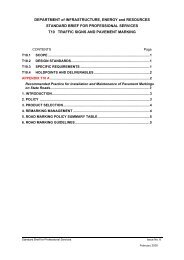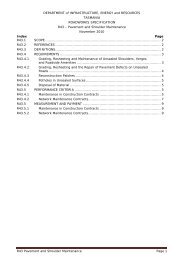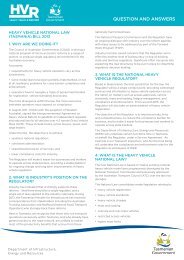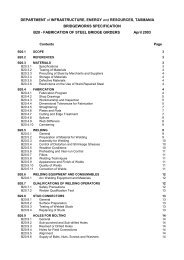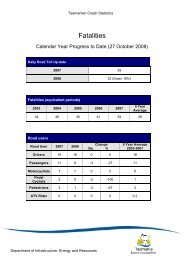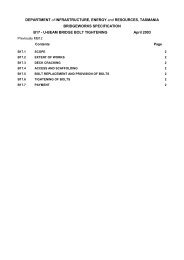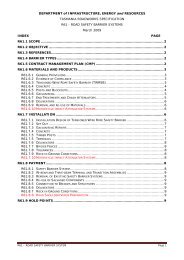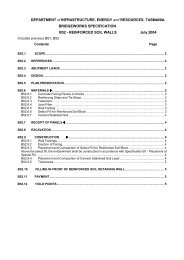Public Environment Report Tarkine Forest Drive ... - Transport
Public Environment Report Tarkine Forest Drive ... - Transport
Public Environment Report Tarkine Forest Drive ... - Transport
- No tags were found...
Create successful ePaper yourself
Turn your PDF publications into a flip-book with our unique Google optimized e-Paper software.
AbundanceThe estimated total population of Arthur River greenhood (Figure 4.1) is less than 900plants. There are 4 known populations. The largest population estimated to support800 plants in 1999 occurs over an area of 2.5 x 0.5 km (Bullocky Hill to Bottle Creek) 13 .Distribution, ecology and habitat preferenceArthur River greenhood is endemic to Tasmania and is only found in the Arthur Riverarea, where it extends over an area of 8 square kilometres occupying 3 hectares intotal (Figure 4.2). The species occurred on the northwest coast at Western Plains andat Cowrie Point but is now believed to be extinct at these locations. The species isknown from dry, sandy slopes of sparsely vegetated stabilised sand dunes, and also inpermanently wet to moist scrubby and sedgy coastal heath converted to semi-improvedpasture by annual slashing (Threatened Species Unit 2000).Habitat occurs in the vicinity of Segments A and B. Observation records are shown inAppendix A Maps 1-4.This species potentially flowers from October to November (Wapstra et al. 2010.Known threatsThe entire distribution of Arthur River greenhood is associated with modifiedenvironments maintained by slashing and winter agistment. The principal threats tothe species are associated with a change of land management regimes. In summary,the threats to the species include the following (Threatened Species Unit 2000):Habitat loss (agricultural and urban development)Cattle grazing (localised erosion)Agricultural improvement (use of fertilisers)Revegetation (coast wattle planting)Inappropriate fire regime (reduced burning could lead to scrub invasion modifyinghabitat).The impacts of the proposed action are discussed in Section 5. In summary they willresult in no direct loss of habitat other than some small amounts of marginal habitat ingrassland on segments A & B. The only potential losses are of plants that havecolonised a gravelled swale adjacent to the road shoulder near an existing population(Figure 4.3). None of the other known threats will be affected by the proposed action.No changes to cattle grazing or other agricultural activities are anticipated. No coastalwattle planting will occur. No expectation for reduction in fire regime is anticipated.There are no known pests or diseases that impact on this species. Neither thepreferred grassy habitat nor the species is susceptible to Phytophthora cinnamomi. Fireoutbreaks are not likely to adversely affect this species as the habitat is unlikely to beflammable during the spring flowering period. Orchids are adapted to fire and typicallybenefit from periodic burns. Fire is used as a tool for habitat management (ThreatenedSpecies Section 2010).There is some potential risk that habitat at Tiger Creek is impacted if machinery isallowed to park or materials are stored in the grassy areas.13 Tas DPIPWE unpublished report 2010 cited in the Pterostylis rubenachii — Arthur River Greenhood SpeciesProfile and Threats Database (SPRAT Profile) http://www.environment.gov.auRef: HB09080H001 PER <strong>Tarkine</strong> <strong>Drive</strong> 33P Rev 00/DL/CL/jw 48



